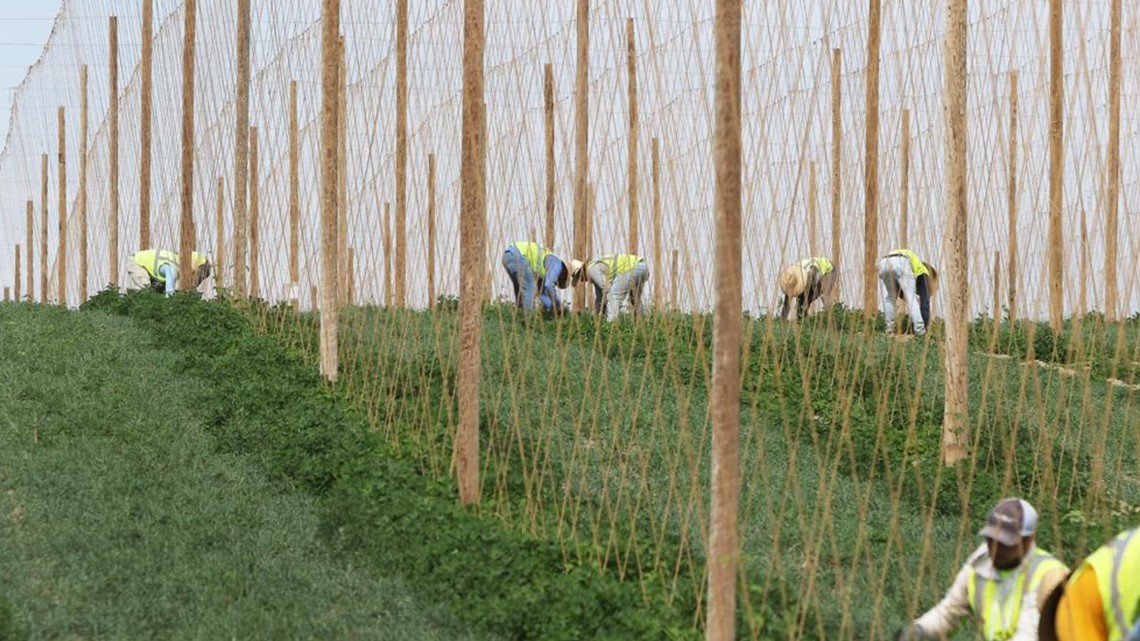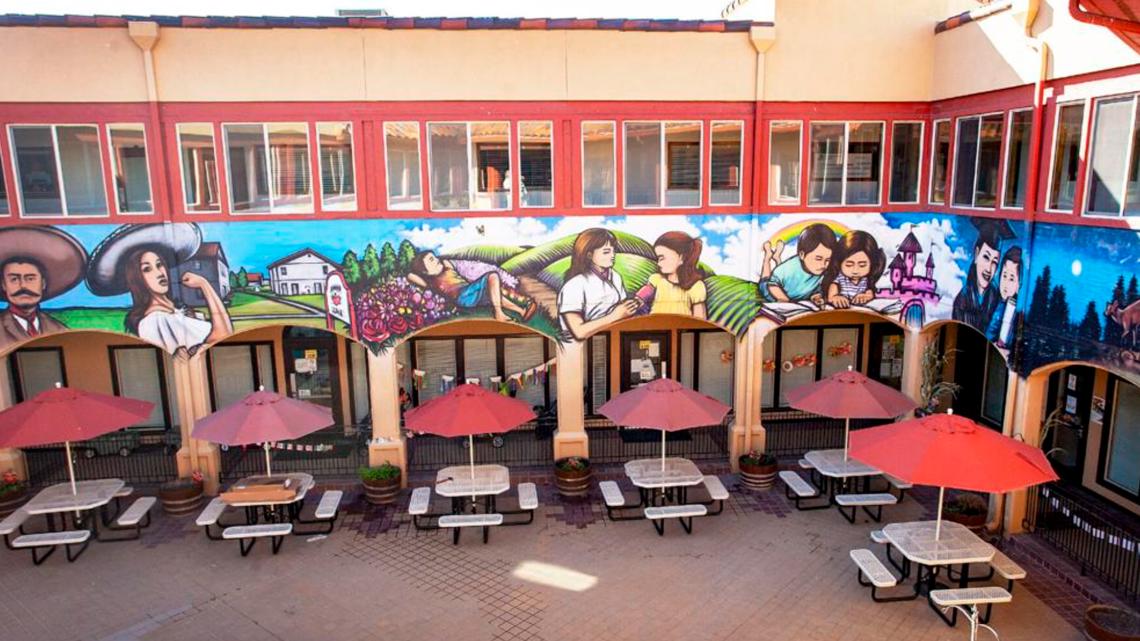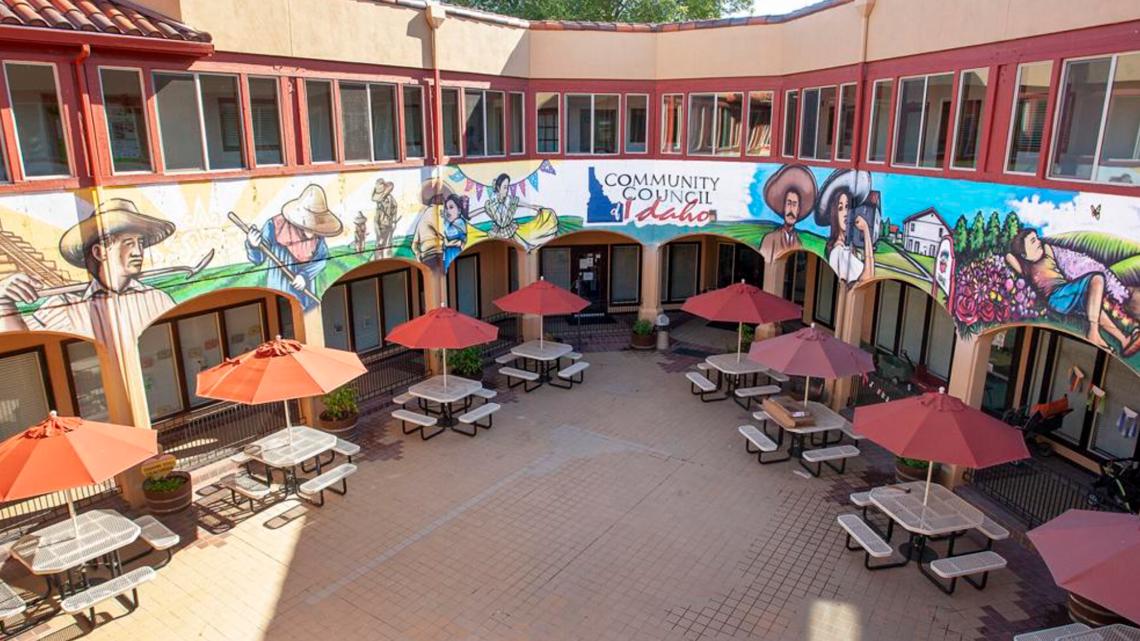BOISE, Idaho — This article originally appeared in the Idaho Press.
Latinos have been migrating to Idaho since the mid 1800s, before it was a state. Like many other ethnic groups, Latinos came in search of jobs and opportunities for the benefit of their families.
Here’s a look at the history of Hispanic and Latino people in the Gem State in the midst of Hispanic Heritage Month.
TIMELINE
Latinos dispersed throughout Idaho, some migrating to Grangeville and some staying in the Boise area, where Jesus Urquides built 30 cabins to house packers.
Mexican vaqueros (cowboys) also came to Idaho, using their skilled horsemanship to herd cattle. Felipe Carruso brought his Californian vaqueros to manage thousands of cattle for Dan Murphy in Owyhee County as explained in the Washington State University Libraries.
By the 1880s, Hispanic workers were contracted to lay railway throughout Idaho, many migrating to big railroad towns such as Nampa and Pocatello.
Toward the end of the 19th century, large-scale agriculture was developed in Southern Idaho. After the United States government forced Indigenous tribes into reservations, it began to help settlers obtain land through the Carey Act of 1894 as explained in El Milagro: A Historic Context.
Through the Carey Act, many settlers sought land in Southern Idaho where they created Twin Falls County between 1900 and 1910. Twin Falls County became home to one of the biggest agricultural centers in Idaho.
The high requirement of labor drove Latinos to Southern Idaho where their labor gave Idaho its success in the agricultural industry during World War I.
In the 1950s, an expansion in the food-processing industry increased the demand for labor in the fields and factories, according to the Digital Atlas of Idaho.
By 1990, Idaho’s Hispanic population rose to 65,000, becoming the largest minority group in the state. It remains the largest with 222,967 residents as of 2020.


During Idaho’s gold rush in the 1860s, Hispanic people migrated north from south of the United States border and became miners and packers.
The hills within Idaho City were frequented until Manuel Fontez found quartz veins in the Salmon River Mountains, according to the Washington State University Libraries.
LABOR IN IDAHO
In 1942, the Mexican Farm Labor Program, otherwise known as the “Bracero Program,” was created to contract Mexican citizens for labor in the United States. This gave Mexican workers short-term legal status to fight against the shortage in agricultural labor during World War II.
Employers were required to pay for transportation, living expenses and proper treatment. The program lasted until 1964 and brought in over 4 million Mexican people, according to the Library of Congress.
In Idaho, more than 15,000 Mexican people were brought through the program. In 1946, 70 percent of non-local workers were braceros as stated in “El Milagro: A Historic Context.”
Many braceros faced discrimination and mistreatment, given low wages and poor living conditions.
In 1945, Victor Prock was working at the Twin Falls Migratory Farm Labor Camp when he was arrested and fined $10. In his attempt to get a 1 cent raise, he tried to rally his workers but was labeled a labor agitator.
Throughout 1946, Mexican workers rallied and organized strikes. People from labor camps around the Treasure Valley marched through the streets of Nampa, refusing to work until the standard wage was met. Workers were being paid 20 cents below the standard wage.
Conditions were met, but the workers were threatened with deportation if the terms of the strike were violated. The Mexican government refused to send workers until the conditions were improved.
Maria Gonzalez Cardenas, an advocate for Latino education and Latin women in power, told the University of Idaho Argonaut, “Idaho is the only state where Mexican workers were pulled out of Idaho by the Mexican government because of the mistreatment or the abuse of workers.”
Although the Bracero Program lasted until 1964, by 1948 the program was terminated in Idaho due to the mistreatment and discrimination that continued.
Gonzalez Cardenas told the Idaho Press, “That trend of mistreatment of workers has continued whether it’s farm worker or H-2A workers (temporary agricultural workers). Requirements of the program is always up to the employers, and unfortunately, if there is no enforcement going on because workers are afraid, that mistreatment continues even today.”
Arnold Hernande, recent winner of the Lifetime Achievement and Excellence in Education Award, explained his experience in the fields of Wilder when his family migrated from South Texas in 1969.
Hernandez came to Idaho in his childhood, with a family of 14 children. He helped his parents in the onion fields, working by the hour or sometimes by the piece of work done.
He remembers the long, hot 14-hour days with 10-minute breaks every few hours. Workers would only get a 30-minute lunch break before returning to work.


Hernandez explained the struggles of working in the fields, especially for women. Bathrooms were not provided; neither was water. He recalls his aunts having to bring long dresses so that they could squat down. “That was their bathroom,” he said.
Latinos continued to migrate to Idaho regardless of the conditions, in hopes of economic stability. They would move around as the opportunities moved, following the seasons of the crops. Through all the movement, many children were affected, creating hardships in their education.
EDUCATION
In 2021, the high school graduation rate of a cohort class for Latinos was 71.8%, the third-lowest in the state, according to the Idaho State Department of Education.
Historically, Hispanic students have had the highest dropout rates of any ethnic group. Due to the constant migratory work, many Hispanic children were forced to leave school and work instead.
The language barrier created many hardships for education, as did the lack of financial aid and counseling which led to the state’s highest ethnic dropout rate.
As late as the 1980s, the graduation rate of Latinos was less than 40 percent, as explained in the Digital Atlas of Idaho.
Hernandez explained that when he worked in the onion fields of Wilder, he would leave school in March and return in October, once the harvest was over.
Eventually, Hernandez overcame this cycle and was able to attain a bachelor’s degree from Boise State University.
He went on to work at the College of Idaho for 28 years as the director of Inclusion and Intracultural Engagement and then worked as the assistant dean of students before leaving the college in 2023.
At the college, he began to grow the Hispanic community and diversify the campus. Over the course of his work, he helped graduate over 2,000 Hispanic students where before, it was only “one and a half” (one Latino student and one mixed Latino student) per year as Hernandez described.
Education has become the foundation for Latino advocates in Idaho.
Gonzalez Cardenas is a part of Boise State University’s College Assistant Migrant Program (CAMP). She believes that power is within the youth and youth gains power through knowledge and policy.


Gonzalez Cardenas believes that the absence of Latinos in political power stems from the lack of opportunity to finish high school.
Few people with a Hispanic heritage have sat in a place of power within Idaho’s government. One of them is Soñia Galaviz, who holds a seat in the Idaho Legislature as a Democratic representative of District 16. Galaviz is the only person of Hispanic descent currently serving on Idaho's Legislature.
I feel like representation is critically important, not only to be a voice and an advocate regarding policy, but to be an example for our youth," Galaviz told the Idaho Press via email. "I think there's merit to the saying, 'you have to see it, to be it.' I want our youth to know that anything is possible and that there is someone that is their advocate and ally in the Statehouse."
Gonzalez Cardenas goes on to explain that in the state of Idaho, U.S. government class is not taken until senior year of high school. With many Hispanic students dropping out to work for their families, they do not receive the same knowledge and opportunities as others, she said.
Gonzalez Cardenas’ three pillars are education, policy and business. Her goal is to empower young Hispanic students so that they may further pursue their education.
“We must invest in our own,” she said.
Through increased opportunities, Latino students have been able to graduate more frequently and attain an education after high school.
Many programs and funds such as CAMP, the Idaho Latino Scholarship Fund, Idaho Hispanic Business Association Scholarship and many more have been created to encourage the pursuit of education.
Luis Caloca, a dean at the College of Western Idaho, explained the importance of education to him.
“I started working in the fields when I was 12,” he said. “College was my path to explore a world outside of agriculture, which ultimately led me to a rewarding career in higher education.”
Gonzalez Cardenas believes that the attainability in education comes from federal aid, not state, and that education is what is necessary for more Latino representation in government.
“Power has never financed its own overthrow,” she said to the Idaho Press.
Gonzalez Cardenas is currently working on a book called “Nosotras-Latinas in Idaho.” The book will detail the journey of 50 inspiring Latinas who overcame the boundaries of society to accomplish their work and give back to the community.
The book will be available in English and Spanish and will be written at a level appropriate for junior high so that it may become a resource for the youth and “adult learners.”
With the increase of financial opportunities through federal aid and private organizations, Latinos are given a chance to attain higher education, in turn, allowing for a stronger Hispanic representation.


RACISM AND ACTIVISM
As of 2022, Idaho’s Hispanic population made up 13.5% of the state’s 1.9 million people, according to the U.S. Census Bureau. This is the largest minority group in Idaho, with the vast majority residing in Canyon and Ada counties.
Although there is a large group within these two counties, many Hispanic people recall a time when Latinos were not welcome.
As described in “El Milagro: A Historic Context,” signs were displayed on businesses prohibiting the entrance of dogs and Mexicans. People were forced to hide their Spanish dialect or else they would be told to get out.
Many of these rules were enforced throughout the Treasure Valley and the city of Nampa.
Hernandez, who won the Lifetime Achievement and Excellence in Education Award, illustrated a time when police would heavily target the Hispanic community in the Treasure Valley. Quinceañeras and weddings were shut down for undisclosed reasons, and immigration officials would show up in fields and throw workers into trucks.
In 1979, a fight between multiple kids broke out in front of an event in Caldwell Hernandez attended, prompting the police and fire department to show up. Hernandez detailed how one officer took a hose from a firefighter who refused to spray the people; the officer proceeded to spray them.
What was supposed to be a family event broke into one of Idaho’s biggest riots. This was due to an accumulation of the transgressions Latinos faced over the years, Hernandez said.
A year after the event, Hernandez was called to the police station. He was there to help the police department through its diversity training. Hernandez believes that the riot was what finally led to the long-awaited training.
Through Idaho’s history, many other strong individuals and groups have risen to better the conditions of Latinos in the state.
The Community Council of Idaho, previously known as the Idaho Migrant Council, was established in 1971. Its goal is to improve and provide resources for the Latino community such as housing, education, health, and employment.
PODER of Idaho was created in 2016 and has been organizing since its rally in support of the Deferred Action for Childhood Arrivals (DACA), according to the PODER of Idaho website. DACA provided protection for young people from deportation. PODER’s goal is to “empower” the Latino community so that they may find “social, racial, gender and economic justice.”
PODER stands for protecting our dreams and empowering resilience.


In honor of Hispanic Heritage Month, the PODER of Idaho Instagram page has been honoring different Latinos who have been nominated by the community. Every day, they post a new person and share a part of their story in which they represent leadership, activism, and strength giving them the title of “Poderistx del dia” or “Poderistx of the day.”
These organizations have become strongly engaged with the state of Idaho. Through their resources, they have helped improve the socioeconomic situation of many Hispanic families.
The Idaho Commision on Hispanic Affairs was established in 1987 as an “independent entity of the state” to serve the Latino community by keeping them informed about Public affairs.
Its goal is to aid other Latino organizations so that they may advocate for the conditions of Latinos.
Margie Gonzalez, the executive director of ICHA, describes the organization as “data-driven.” The organization works with institutes such as the University of Idaho, as well as the five Indigenous tribes of Idaho, to release accurate data for the public.
She went on to tell the Idaho Press that ICHA is the “voice” for families when it comes to state legislation.
Although the organization is not an “advocate group,” according to Gonzalez, the data it collects is the evidence needed to prove to the state the needs of the Hispanic community and create policy.
The work done by ICHA has become a resource for other organizations that have the ability to advocate for the Latino quality of life without the restrictions put on ICHA, as explained by Gonzalez.
Don’t reinvent the wheel, use the data we are giving you,” she said.
Through the collective work of many people, ICHA continues to be a crucial resource for Latinos.
One of the organization’s most impactful members was JJ Saldaña, who died in late September.
Rebecca De Leon, a close friend of Saldaña’s, describes him as “a pillar for the community” and a “strong piece” that held it together. Many people saw him as a champion who stood above the rest.
De Leon went on to say that Saldaña loved everyone he met, but his passion was in education. Saldaña pushed for Latino involvement in education and fields of work that lacked Latino presence.
Margie Gonzalez describes Saldaña as a loyal friend of 24 years. In the time she knew him, he always strived for the youth.
Through his work, Saldaña was involved in the creation of many nonprofits. His work opened many doors for young, passionate Latino students and continues to do so.
Although he is no longer here, Saldaña’s memory and passion will live on through the people and students who he impacted.
This article originally appeared in the Idaho Press, read more on IdahoPress.com.
*Translation done by Richard Rodriguez KTVB*
Watch more Local News:
See the latest news from around the Treasure Valley and the Gem State in our YouTube playlist:
HERE ARE MORE WAYS TO GET NEWS FROM KTVB:
Download the KTVB News Mobile App
Apple iOS: Click here to download
Google Play: Click here to download
Watch news reports for FREE on YouTube: KTVB YouTube channel
Stream Live for FREE on ROKU: Add the channel from the ROKU store or by searching 'KTVB'.
Stream Live for FREE on FIRE TV: Search ‘KTVB’ and click ‘Get’ to download.


